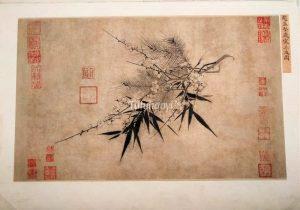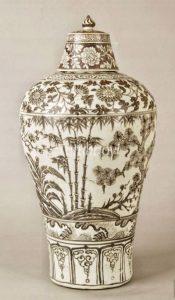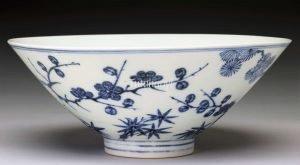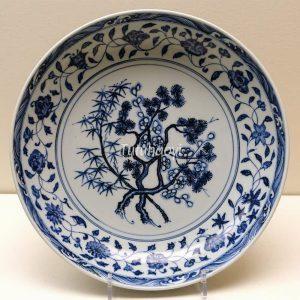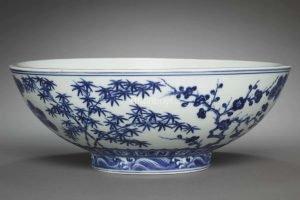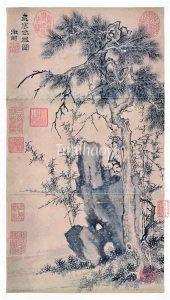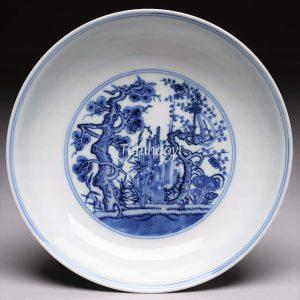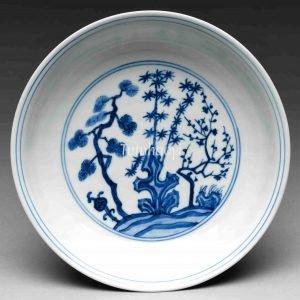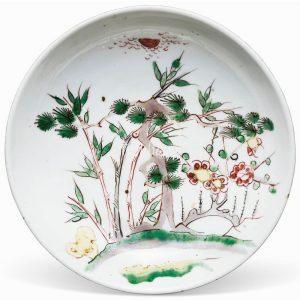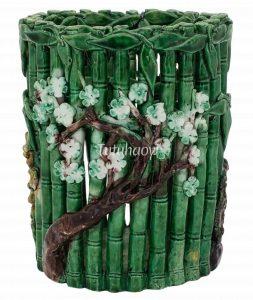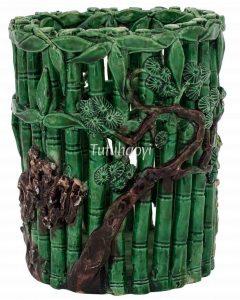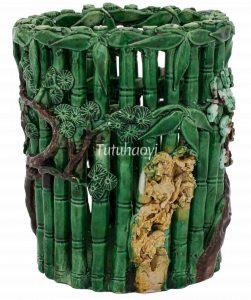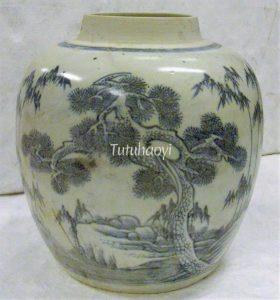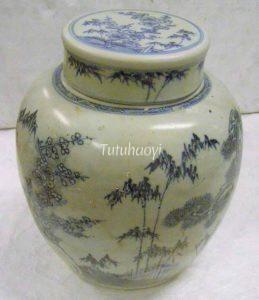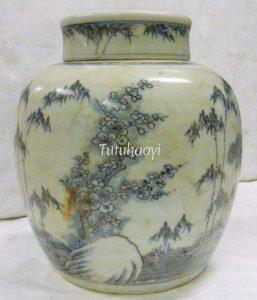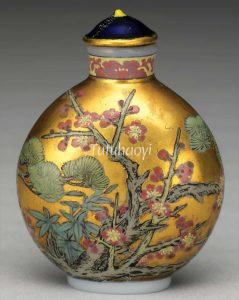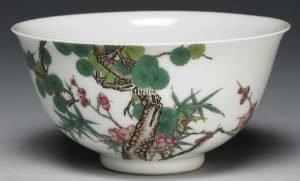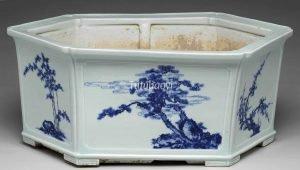Three Friends in Winter
岁寒三友
© Tutuhaoyi.com owns the copyright of the description content for the images attached. Quoting all or part of the description content on this page is permitted ONLY IF ‘Tutuhaoyi.com’ is clearly acknowledged anywhere your quote is produced unless stated otherwise. (本页描述内容版权归Tutuhaoyi.com所有,转发或引用需注明 “Tutuhaoyi.com”, 侵权必究, 已注开源信息的条目除外。)
Pines, bamboos, and plum blossoms (prunus) form the ‘Three Friends in Winter’ (岁寒三友) motif. The early blossoming plum is the harbinger of spring; the bamboo bends in wind but does not break; and the pine needles remain green throughout the harsh winter. They all symbolise moral integrity and friendship in difficult times and have been cherished by generations of Chinese literati (scholar-officials).
Related story regarding plum blossom:
Fig 1: ‘Three Friends in Winter’, handscroll, ink on paper, Zhao Mengjian 赵孟坚 (1199–1264), courtesy of the National Palace Museum, Taipei
Fig 2: meiping porcelain vase with underglaze red decoration, Hongwu period (1368–98), Ming dynasty, courtesy of Nanjing Museum, China
Fig 3: porcelain bowl with underglaze blue decoration, Yongle period (1403–25), Ming dynasty, courtesy of the National Palace Museum, Taipei
Fig 4: porcelain dish with underglaze blue decoration, early 15th century, courtesy of the Ethnological Museum, Berlin, Germany
Fig 5: porcelain bowl with underglaze blue decoration, Xuande period (1426–35), Ming dynasty, courtesy of the Cleveland Museum of Art
Fig 6: ‘Three Friends in Winter’, hanging scroll, ink on paper, Wen Zhengming 文征明 (1470–1559), courtesy of the National Palace Museum, Taipei
Fig 7: porcelain dish with underglaze blue decoration, Jiajing period (1522–66), Ming dynasty, courtesy of the National Palace Museum, Taipei
Fig 8: porcelain dish with underglaze blue decoration, Jiajing mark and period (1522–66), Ming dynasty, courtesy of the Metropolitan Museum of Art, New York
Fig 9: enamelled saucer dish, Tianqi period (1621–1627), Ming dynasty, courtesy of the Sir Michael Butler collection
Fig 10-12: famille verte brushpot, Kangxi period (1662–1722), Qing dynasty, courtesy of The Jie Rui Tang Collection
Fig 13-15: lidded porcelain jar with underglaze blue decoration, Yongzheng period (1723–35), Qing dynasty, courtesy of the British Museum, London
Fig 16: glass snuff-bottle with enamelled decoration, Qianlong period (1736–95), Qing dynasty, courtesy of the National Palace Museum, Taipei
Fig 17: falangcai enamelled bowl, Qianlong period (1736–95), Qing dynasty, courtesy of the National Palace Museum, Taipei
Fig 18: porcelain basin with underglaze blue decoration, Qing dynasty (1644–1911), courtesy of the National Palace Museum, Taipei
